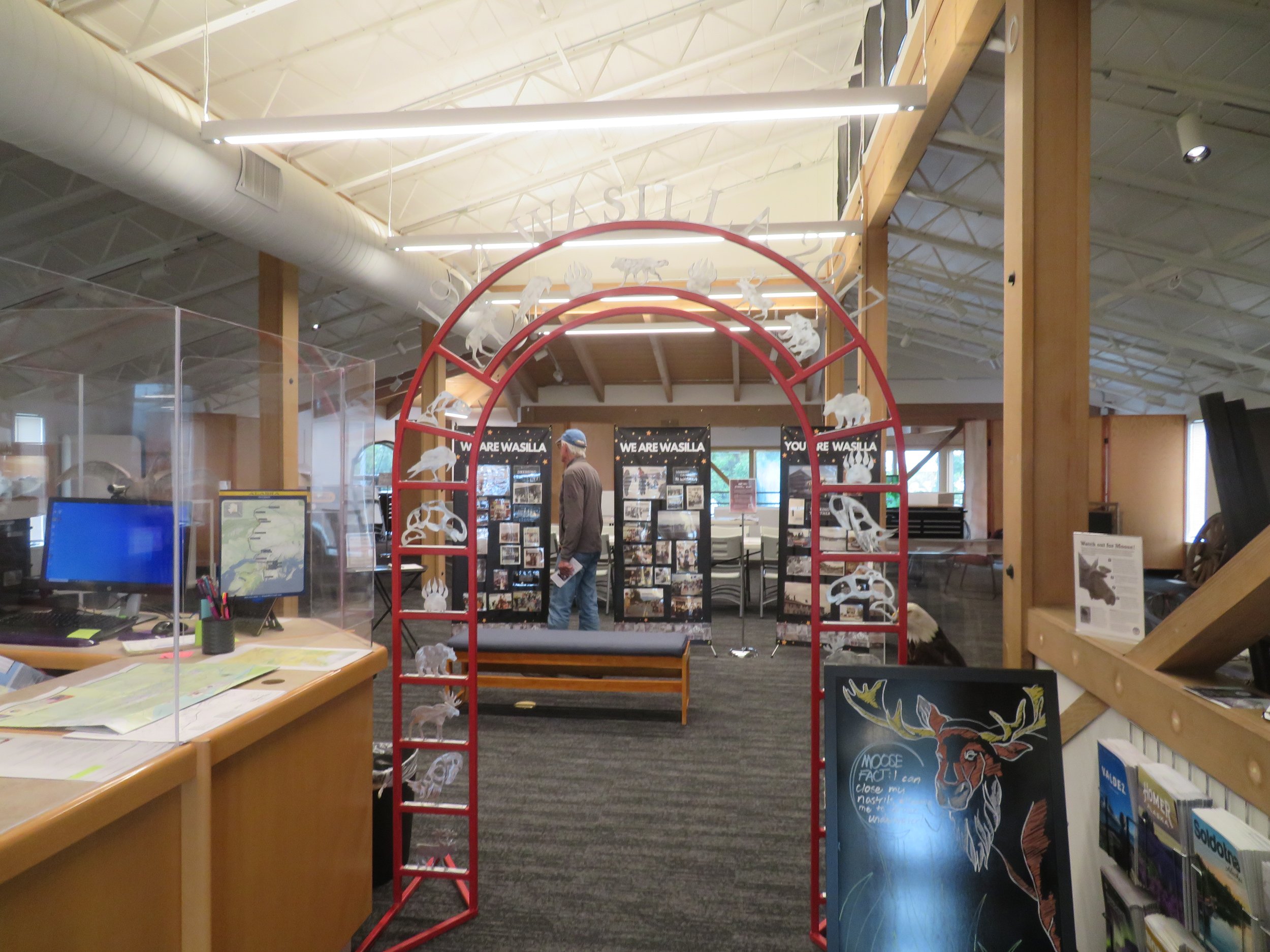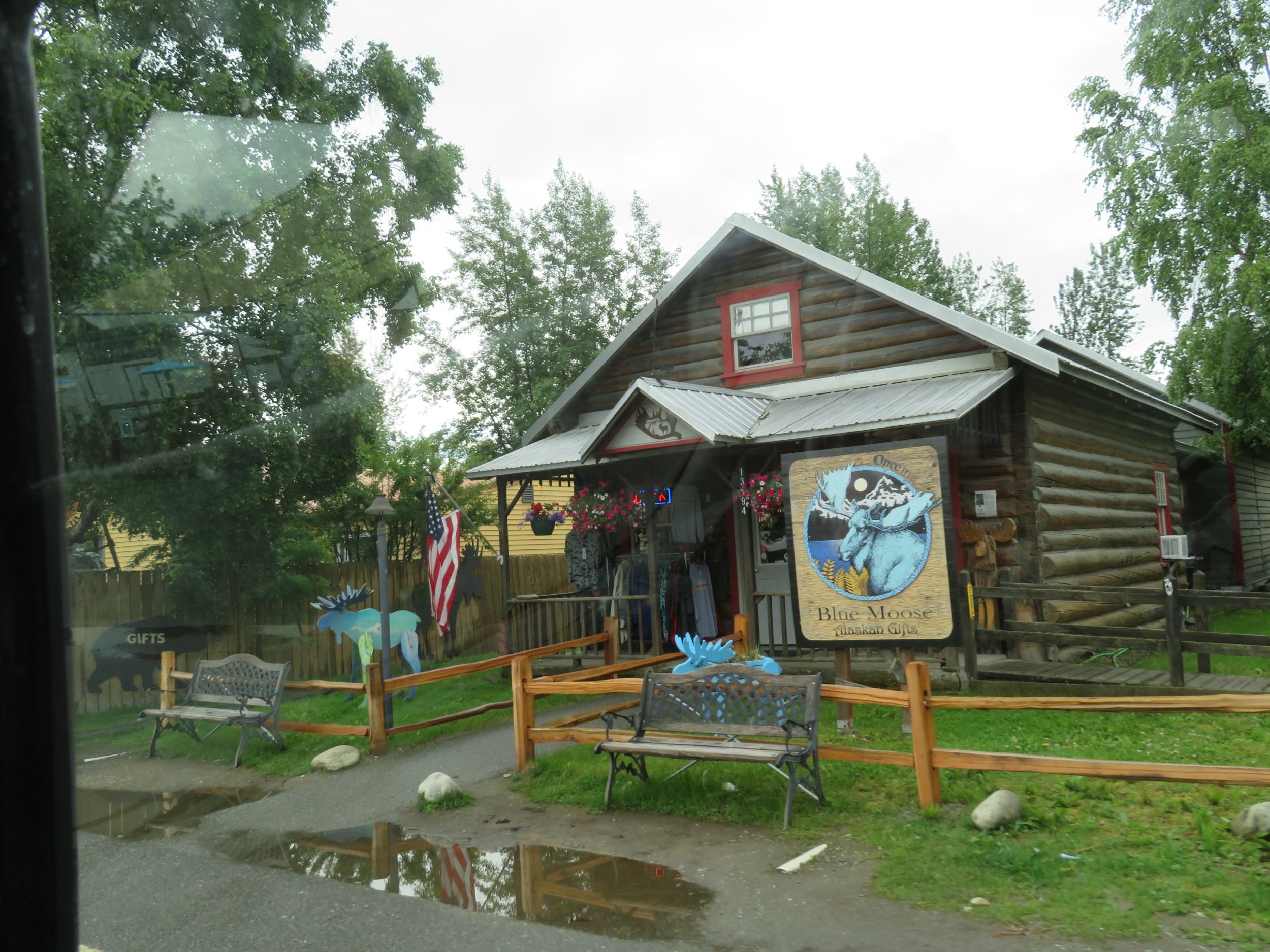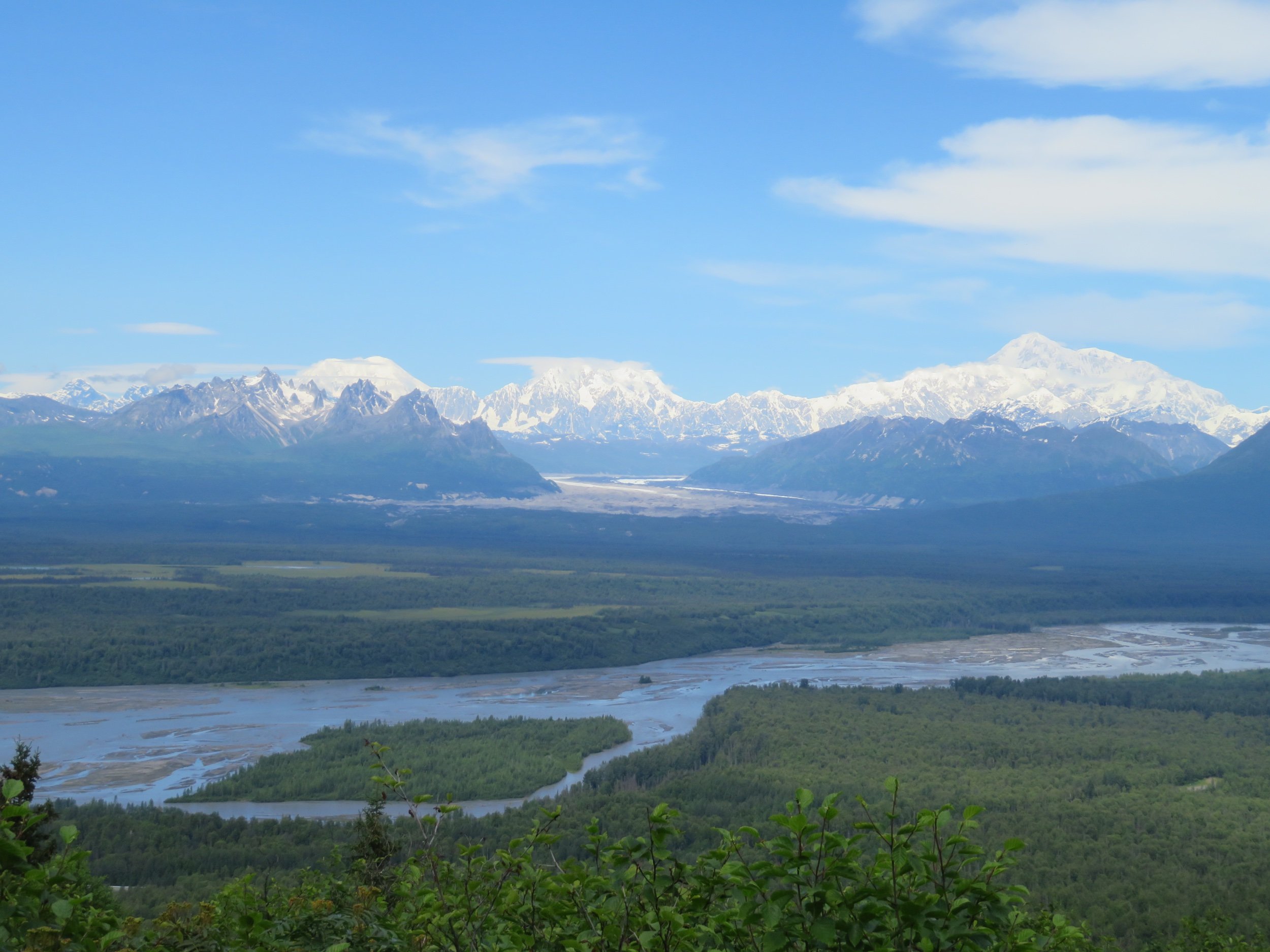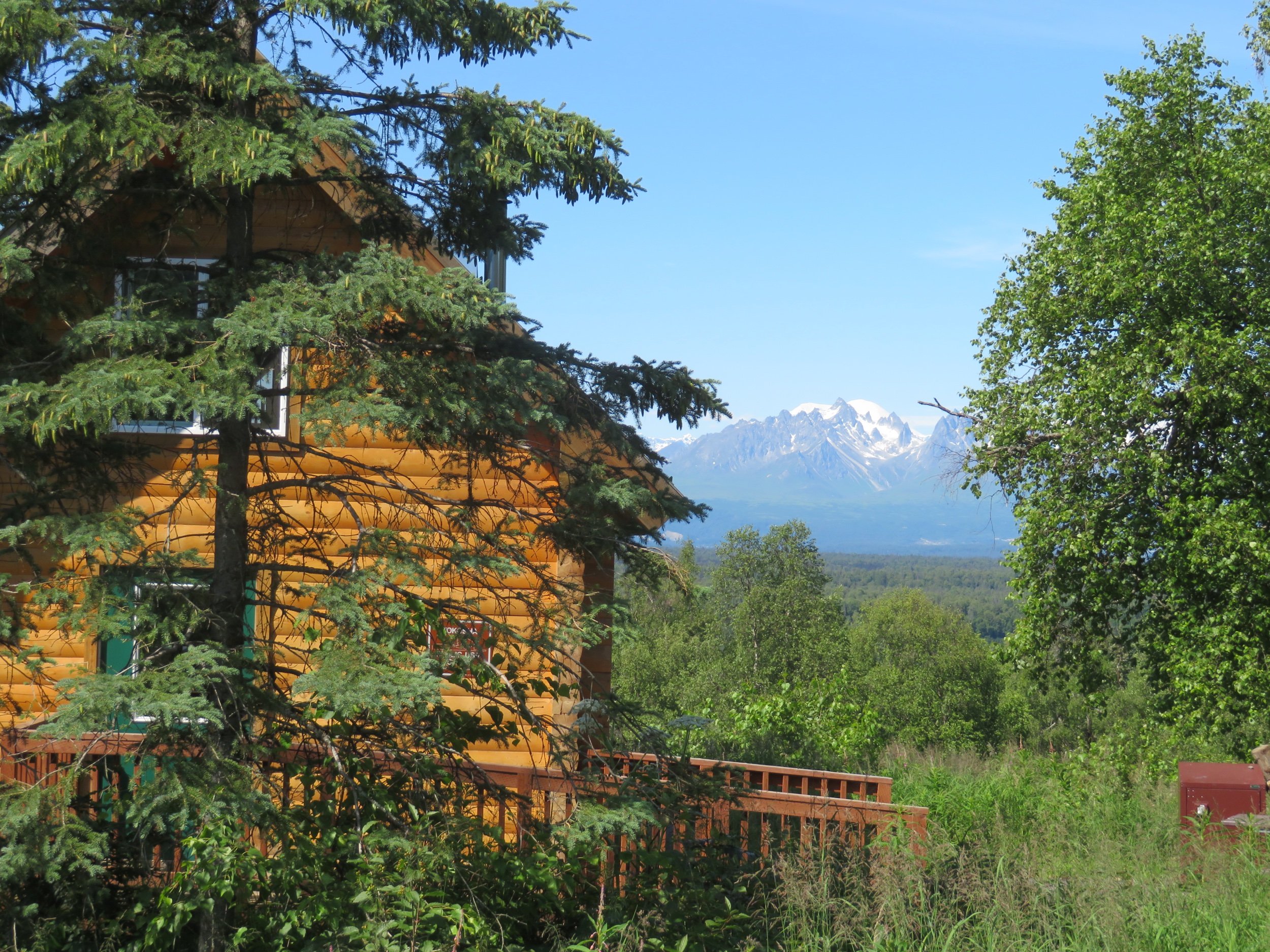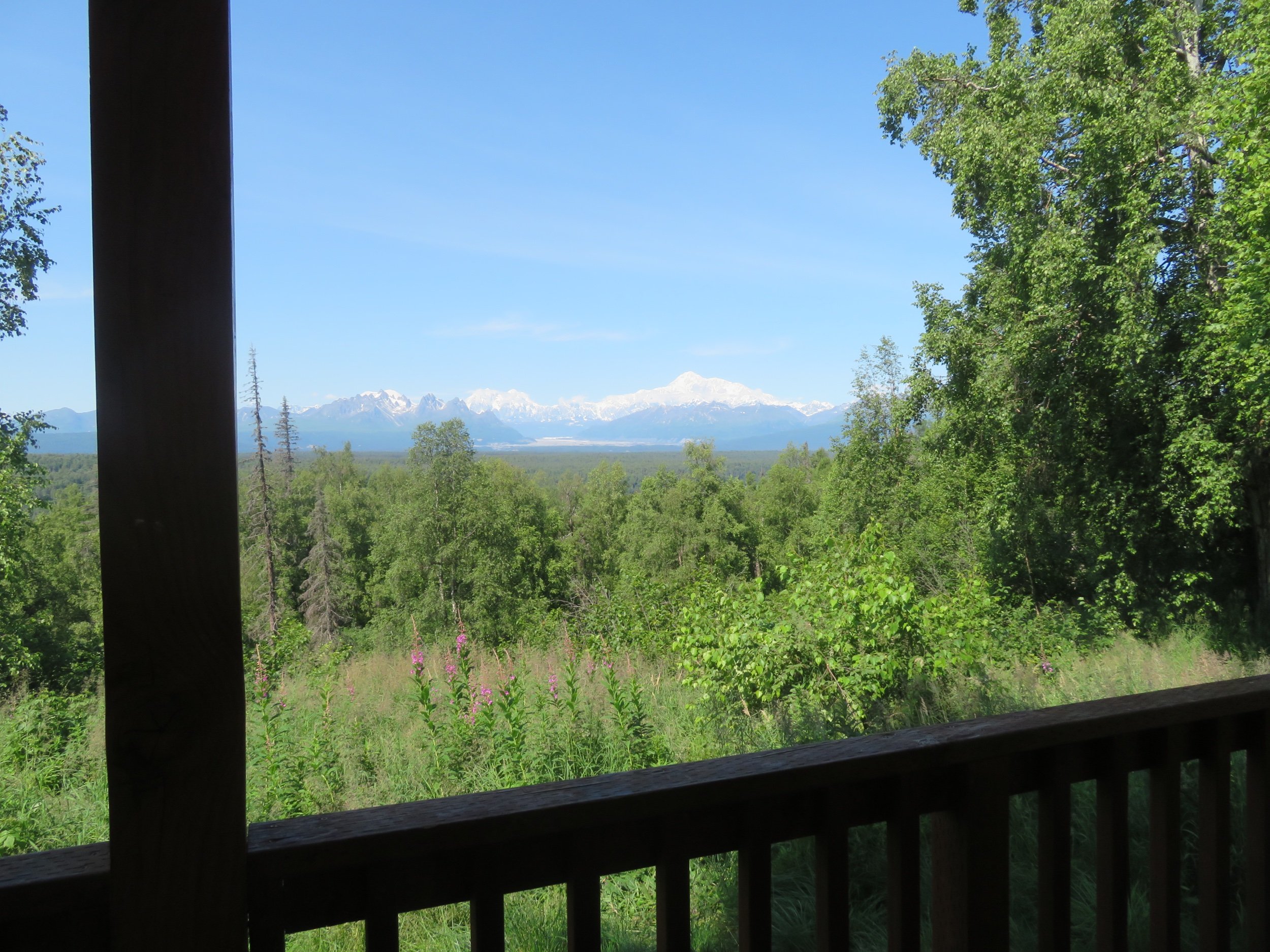In Awe of Denali
/After a couple of catch-up days in Anchorage, we headed north into new territory on the George Parks Highway (Alaska-3). Here’s map to follow our progress north.
We stopped briefly in the town of Wasilla, ‘Silla’ to the locals. The Visitor Center is small, but friendly. We noted with some dismay an entire area of the center devoted to catastrophes… how to prepare and what to do in case of: earthquakes, wildfires, winter storms. My goodness!
I had picked up a brochure for the Iditarod Sled Dog Race Headquarters here in Wasilla and we decided to stop in. Admission is free and it was definitely a worthwhile stop. An informative video entitled ‘Why They Run’ was showing and there were lots of old photos and memorabilia from Iditarods past. More Iditarod details? Check out David’s Blue View on the Iditarod here.
Joe Redington is considered the ‘Father of the Iditarod’.
Next door, a local musher offered dog team cart rides ($10/pp for a 3-minute exhilarating ride) on a well-worn dirt path. These enthusiastic dogs seem to put their all into each pull. We watched as the musher took off with his passengers pulled by a team of 9 dogs. Interestingly, sled dogs are not chosen or bred for their AKC purity or looks, but rather for their intelligence, strength and stamina.
A little trivia, the word ‘musher’, a sled dog driver, is probably a bastardized form of the French word ‘marcher’… to walk.
Continuing north, we found a campsite at Willow Creek. It is the frozen lake here that is the actual starting point of the Iditarod in Wasilla. We spent the evening swatting mozzies before the rain began. It rained hard all night. The morning was overcast but the forecast promised clearing skies and sunshine for the next few days. We were elated.
Fourteen miles up the Talkeetna Spur, we came to little touristy town of Talkeetna. There’s an Alaska Railroad stop there and all manner of restaurants, pubs, tour guides and souvenir shops. It’s a busy, congested little place with few places to park, so we didn’t.
Along the road heading back to the Parks Highway, we spotted the Kahiltna Birchworks. We’d never heard of birch syrup before until we arrived in Alaska and we’ve seen it for sale in several shops. This tidy little place snugged back in the woods had buckets hanging from its copse of birch trees.
Kahiltna Birchworks is the world’s largest producer of pure, organic birch syrup and they offered us a tour and a tasting. We were curious. Why not?
It’s very different from maple syrup. It takes 110 gallons of birch sap to make a gallon of syrup. We were offered three different varieties totally based upon when the sap was collected from the trees. It was a honey-like consistency and taste with a slight fruity flavor. One major difference between birch and maple syrup… birch is fructose-based vs. sucrose-based for maple syrup. We didn’t end up buying any. Although we realize the amount of time and energy spent in producing the syrup, at $16.95 for a tiny container, we opted out.
Weather-permitting, we’d read that the views of Denali from Wasilla, Talkeetna and heading up the Parks Highway could be outstanding. Weather, however, was not-permitting and we conjured up an image iof what it might look like if not for the drizzle and heavy cloud cover.
Denali State Park offers several campgrounds along the Parks Highway. Most sites are by reservation, but a few in the K’esugi Ken Campground were First Come-First Serve and we were fortunate enough to snag one ($30/night with electric).
Opened in 2017, this campground is absolutely gorgeous. Paved roads, level, spacious sites and several well maintained hiking trails were great, but the views of Denali are what captivated us. We had planned to stay a night and ended up renewing our spot every day for the entire week prior to our reserved Denali National Park stay.
The first afternoon we arrived, we hastened to set out on a walk, knowing the clouds could move in ever so quickly and rob us of this spectacular sight. The 1/2 mile Moose Flats Loop tracked through the woods then opened to an expansive view. I snapped and snapped and snapped photos of the mountain as if it might move at any second.
Considering Denali was still nearly 100 miles away, the view was superb. Every time we saw it, every person we met had the same reaction… Wow!
For four consecutive mornings, the sun shone bright, the skies were clear and the beauty and grandeur of ‘the Great One’ was on display. We’d rise early and within a few steps of our campsite, we could see snow-covered Denali.
According to local native legend, Dghelay Ka’a (Denail) and his wife, Be’u, and their child, Begguya, are the mountain people. When the mountains are cloud-covered, it is the smoke from the family fire and warm weather can be expected. When it is clear, the fire is out and it will be cold. Not much difference than woolly caterpillars in autumn mean a cold winter or cows laying down in the field mean rain’s coming.
There were several short trails in addition to the Moose Flats Loop and all had outstanding views of Denali and the Alaska Range. The Glacier View Trail also afforded us a chance to see the Ruth Glacier.
The Curry Ridge Trail is a bit longer, about 6 miles round trip. The well-maintained trail climbs gradually via switchbacks up 1100 feet and once again, the views are astounding.
Each morning we walked and greeted the mountain.
Each trail, each day left something new to be discovered. One day it was a short spur off the Moose Flats Loop with two small ponds in which Alaska’s only amphibian dwells, a small frog that can withstand the winter cold by freezing solid then resurrecting itself in the springtime. And just for the record, Alaska is the only state that has no snakes.
There are three public-use cabins for rent at the park and one day when we were sure they were unoccupied, we peeked inside. They looked to be quite comfortable with electricity for lighting, a big wood stove for heat, and a spiral staircase to the second floor sleeping area. Most impressive of all, however, was the view from the front porch.
After four days, we were getting low on some supplies and headed south on the Parks Highway to Trapper Creek to a small Three Bears supermarket and a Vitus convenience store. We were able to gather what we needed between the two shops and stopped on the way back at Denali View South viewpoint. There is a $5/day fee after 30 minutes and $15/night for camping with a fire ring and picnic table in a paved parking lot.
The views of Denali would have been spectacular if the day had been clear, but the mountains had clouded over. We walked the short trail uphill for a different view, but it was just as hazy.
We couldn’t seem to leave K’esugi Ken Campground, and we paid yet another two day’s fees. The campsite is spacious and so very pleasant. We’ve set up the screen tent for the first time on the trip and it’s perfect to get out of sun and keep the mosquitoes at bay. There are plenty of walking opportunities here and it’s just a lovely place to be. It’s the longest we’ve stayed at any place since we left Las Vegas.
Though the weather has been great and the skies are sunny and clear, the Great One has been shadowy and hazy for a couple of days. Because of it’s height (20,310’ according to NPS), the mountain makes its own weather and since it’s ~100 miles away, what we see here doesn’t reflect what happening up there.
Our last day at K’esugi Ken was cool, overcast and gray. The mountain kept to himself today. We couldn’t even make out his silhouette for all the clouds and mist. We puttered around, did chores, wrote, read, walked and the day was over in a flash.
Next time, we’re off to Denali National Park for a week. Come on along. It’s an incredible place, but be sure to bring your mosquito repellent… you’re going to need it.



